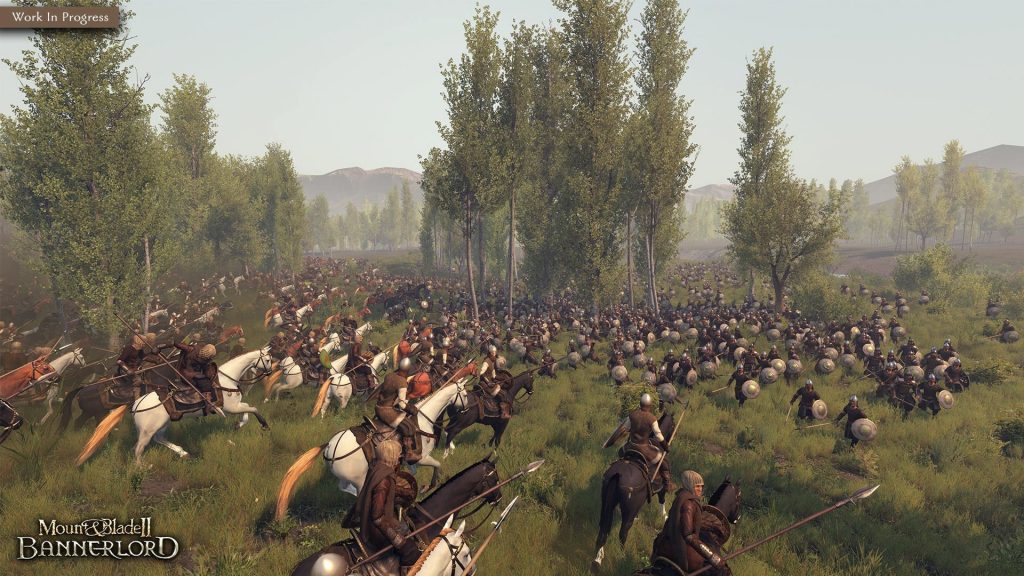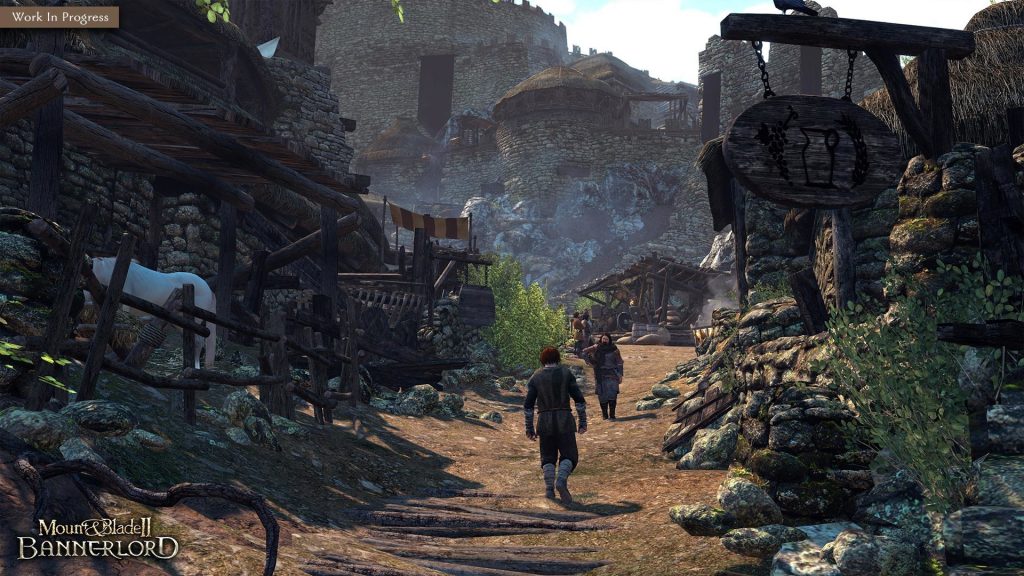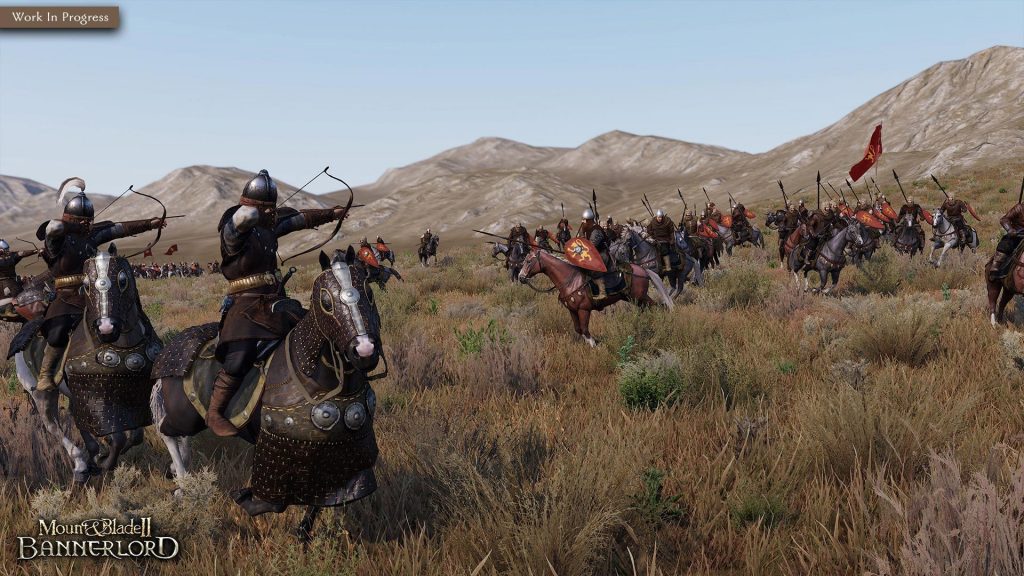Mount & Blade II Bannerlord is an action role play game, which has recently been released on Steam’s Early Access, by publisher and developer TaleWorlds Entertainment. Set over 200 years before Mount & Blade Warband it is actually a prequel to the previous title. Offering both a vast singleplayer experience and online multiplayer, the game has been receiving constant updates since launch – seeing bugs squashed and balance passes made. However, is it an experience to jump in on now or wait for the full release? Let’s find out!
One of the most notable things about Mount & Blade II Bannerlord is the combat system, which is animation/physics based. Players use mouse movement to select the direction of their attack or block. This system results in a tremendously high skill ceiling, though while the principles are simple newcomers will initially struggle. The first sign of this struggle is likely to come in the opening stages of the campaign, which forms the meat of the singleplayer component.
Upon starting a campaign you create a character as you would in many RPGs. It presents you with a main quest about rescuing your kidnapped infant siblings, with the nice thematic twist of selecting your starting skills by choosing between events in your childhood. You are then dumped into a (skippable) training ground, which is where newcomers may start to see the game’s teeth.

The ranged and mounted combat areas are fine as they just have you hitting static targets. The infantry melee combat tutorial starts fine prompting you through the basic steps of attacking and blocking in each direction, before throwing you into combat with a sparring partner. If you don’t already know what you’re doing though that sparring partner will utterly destroy you with a perpetual flurry of attacks. If you’re new to the series choosing to take a shield for this is recommended. Sadly the tutorial makes no mention of core functions like kicks (E) or shield blocks (Block with shield + E).
Once you’re out of the training fields you will be somewhat awkwardly pushed along baby’s first quest, which gives you a handful of troops with which to hunt down some bandits. The pseudo-tutorial continues here, telling you the absolute most basic parts of the troop control system but leaving out a lot of really critical information. At this early stage it doesn’t matter much but you will quickly need to look up youtube videos to find out how to keep your men under control. The control you have over the troops is quite impressive. Still, it will take a good amount of practice to be able to do it quickly in the midst of a battle – everything is done from the perspective of your character and time doesn’t stand still while you give orders so care must be taken.
At this point the game still looks somewhat like a normal RPG. Players will have villages to visit, quest-givers and vendors to talk to, and an overworld map to travel on to destinations. Through the starter quest you will have around 10 men total to control which may maintain this illusion. Once you’re out of that things rapidly diverge from the norm. Players are probably still going to be doing quests but their party size will quickly get up to 30 and it certainly doesn’t stop there. Later on your own party can number in the hundreds. Plus, you can also call in NPC nobles to form an army, each bringing their own parties to the *ahem* party.

To bring in other nobles implies that you’re nobility yourself, which isn’t the case from the beginning. Players are able to swear allegiance to a kingdom (or empire) after earning enough renown, making themselves a minor noble in the process. Doing this gives you access to the fief system, which allows you to spend the influence you gain mostly through combat to sway the decision of who gets to keep freshly conquered territory. This opens up the opportunity to become the lord of castles and/or towns, which then need to be managed to extract the maximum amount of tax you possibly can, or to keep your people happy I suppose but why would you want to do that?
As well as the beloved taxes players have some other options to make money, chiefly through trading. Trading can be achieved either personally or through autonomous trade caravans. If you want to do it personally Bannerlord can basically become a medieval truck simulator, replacing trucks with large herds of donkeys (or camels) as you buy low and sell high. Supplementing the straight-up trading is the smithing system. It is a surprisingly complex activity, with a huge variety of weapon parts to unlock – as well as the option to size each part of the weapon to your liking. Refining the raw resources and turning them into weapons is often a profitable endeavour, but you can also make yourself some valuable equipment upgrades – hopefully the system will be expanded from weaponry to include armour in the future.
Involved though the singleplayer offering already is, Bannerlord has more to offer; there is already a core multiplayer experience waiting for players online. Featuring modes such as captain’s mode, where players unsurprisingly command small armies at each other, there are also modes where players play as an individual – without an AI army of any size to back them up. Siege is one of these modes where up to 100 players are split into two teams of attackers and defenders. Over a couple of different Siege maps these games last a good amount of time, allowing flags to be pushed, siege equipment utilized and potentially see a castle sieged. Progress truly feels earnt in Siege, with the air full of arrows, flags defended by shield walls and flanking cavalry units.

Due to the difficulty of pushing into a castle these games can feel punishing to new players, with very little done to help them. Persevering allows for every small win, every flag captured or defended, to feel like an achievement. Knowing that you have pushed or repelled other actual players results in moments feeling more awesome. If a cavalry unit is tearing up those around the battering ram, jumping and taking them out with a two handed battle axe is a moment of exhilaration. Being part of that push that breaks through and finally ends those pesky archer ranks also gives a sense of satisfaction.
Bannerlord’s multiplayer isn’t without its flaws. First and foremost, while the team has been releasing a constant flow of fixes, there are still issues regarding server stability. Some issues such as cavalry animations have already been fixed though, which shows plenty of promise. Team deathmatches are an option, though they aren’t intuitively part of the quick play game modes. Instead, the mode is located in the custom game list. Progression is one missing feature of sorts, with a leveling system that offers players no incentive to gain XP. As a beta there is hopefully more maps and content on the way – and at least a minor reason to level up.
Mount & Blade II Bannerlord has a steep learning curve, and combining this with its current state, some may find the game a little too clunky. Thankfully, the bug fixes are constantly being churned out by TaleWorlds Entertainment, so there is little doubt that the experience is already heading in the right direction. As it stands Bannerlord is the updated version of Warband many would be happy with, it just needs that bit more – in terms of content for multiplayer and general polish – to be considered an incredible successor.
(Editor’s Note: Mount & Blade II Bannerlord was provided to us for the preview by TaleWorlds Entertainment.)
